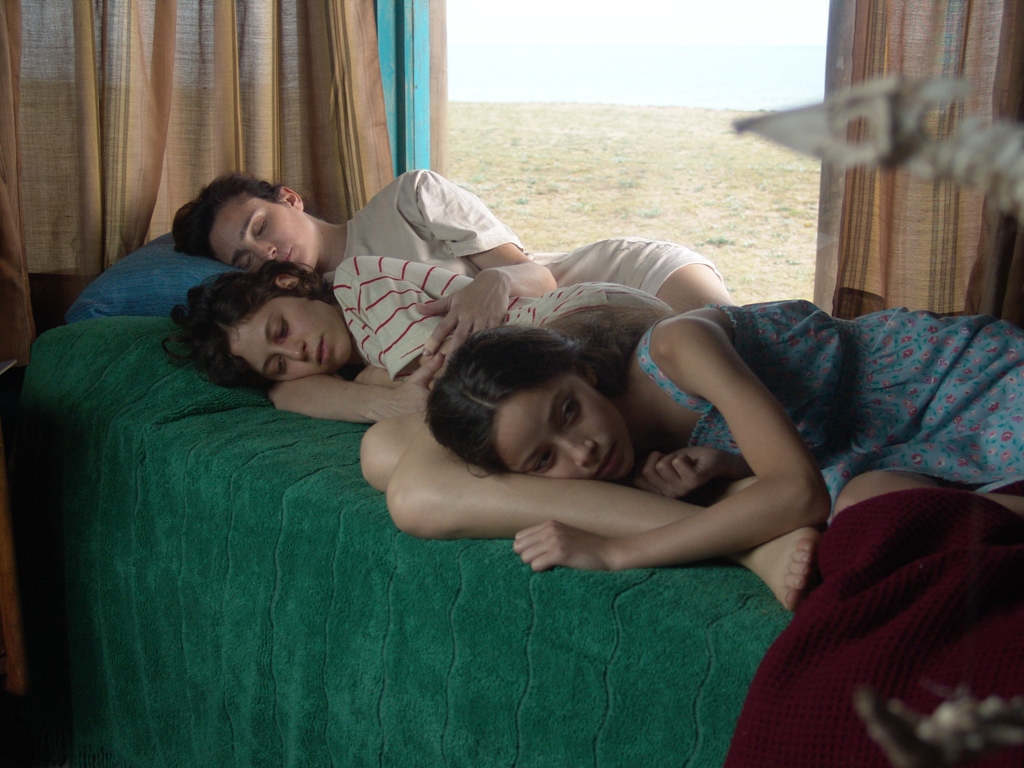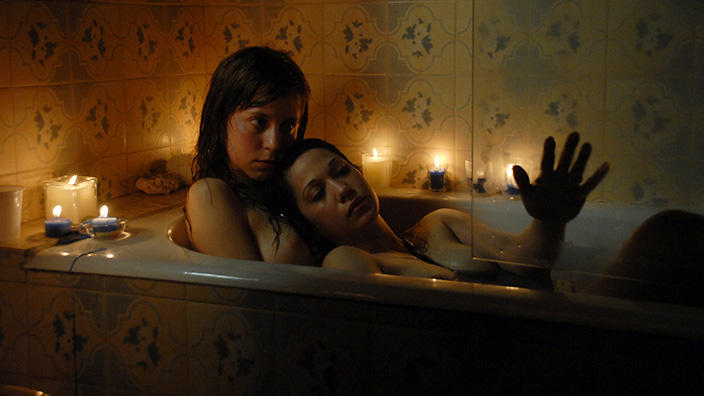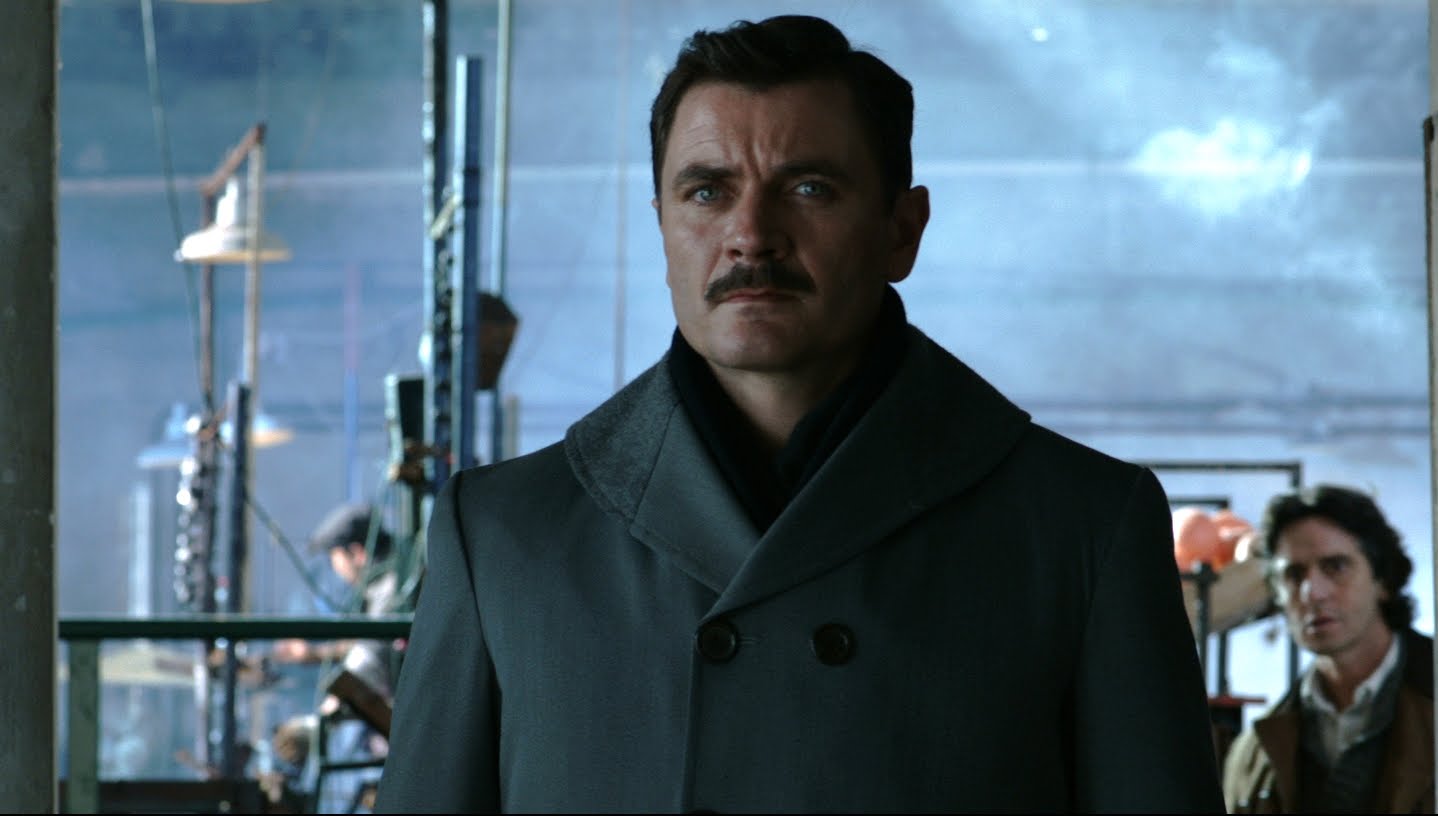Women with a Camera: How Women Directors Can Change the Cinematic Landscape by Emanuela Betti
What I saw… was the problem women have faced for centuries: the popularity of woman as art subject, not as creator. What critics and award judges seem to love are not so much women’s stories, but women’s stories told by men. Stories in which women’s agency is strictly and safely in the hands of a male auteurs. … We need more women filmmakers — not as a way to fill quotas, but because women’s stories are different, unique, and need to be told.
Why Eve’s Bayou Is a Great American Art Film by Amirah Mercer
The story of a family burdened by salacious and supernatural secrets in 1962 Louisiana, the movie has become one of the finer American films in the Southern gothic tradition; but with a Black director and an all-Black cast, Eve’s Bayou has been unceremoniously booted from its deserving recognition as the fantastic, moody art film it is.
Leigh Janiak’s Honeymoon as Feminist Horror by Dawn Keetley
The film thus brilliantly puts the everyday (marriage) on a continuum with the horrifying (possession?), connecting the problem of Bea’s troubled self-expression and containment, now that she’s married, to the later seemingly supernatural plot. … Are the seemingly supernatural elements of the plot symbolic of Bea’s struggles with intimacy and the weighty expectations of married domestic life (sex, cooking, and reproduction)? Janiak’s expert writing and directing definitely leaves open this possible subtext of the film…
When Love Looks Like Me: How Gina Prince-Bythewood Brought Real Love to the Big Screen by Shannon Miller
Gina Prince-Bythewood’s choice to center these themes around a young Black couple shouldn’t feel as revolutionary as it does. But when you consider that “universal” is too often conflated with “white,” Love & Basketball feels like such a turning point in the romance genre. It was certainly a turning point for me because, for a moment, Black love and romance, as told by Hollywood, weren’t mutually exclusive.
Sofia Coppola as Auteur: Historical Femininity and Agency in Marie Antoinette by Marlana Eck
Sofia Coppola’s film conveys, to me, a range of feminist concerns through history. Concerns of how much agency, even in a culture of affluence, women can wield given that so much of women’s lives are dictated by the structures of patriarchy.
The Gender Trap and Women Directors by Jenna Ricker
But, when was the last time ANYONE sat down to write a story, or direct a project and asked themselves — Is this story masculine or feminine? Exactly none, I suspect. … Storytellers tell stories, audiences engage, the formula is quite simple. But, it only works one way — male filmmakers are able to make any film they want without biased-loaded gender questions, whereas women filmmakers always face more scrutiny and criticism.
Individuality in Lucia Puenzo’s XXY, The Fish Child, and The German Doctor by Sara Century
In the end, it is this focus on individuality that is the most striking common theme of Lucia Puenzo’s works. Each of her characters undergoes intense scrutiny from outside forces, be it Alex in ‘XXY’ for their gender, Lala in ‘The Fish Child’ for her infatuation with Ailin, or Lilith from ‘The German Doctor,’ who is quite literally forced into a physical transformation by a Nazi.
Andrea Arnold: A Voice for the Working Class Women of Britain by Sophie Hall
British director/screenwriter Andrea Arnold has three short films and three feature films under her belt, and four out of six of those center on working class people. … [The characters in Fish Tank, Wasp, Red Road, and Wuthering Heights] venture off away from the preconceived notions they have been given, away from the stereotypes forced upon them, and the boxes society has trapped them in.
Susanne Bier’s Living, Breathing Body of Work by Sonia Lupher
Women consistently make good films around the world, even if we have to look outside Hollywood to find them. Susanne Bier is one powerful example. Her vivid, probing explorations into family dynamics and tenuous relationships are fiercely suggestive marks of a female auteur that deserves recognition.
No Apologies: The Ambition of Gillian Armstrong and My Brilliant Career by Rebecca Hirsch Garcia
However, Armstrong also doesn’t mock Sybylla’s ambition or treat it as a joke. In Armstrong’s world, the fact that Sybylla has desires and wants outside of marriage and men is treated seriously because Sybylla takes it seriously. She never needs to prove herself worthy enough for her desires. … [She is] a woman who bravely acts according to her own desires, someone willing to risk everything in order to have what she wants and who recognizes that men and romance are not the sum total of her world.
OMG a Vagina: The Struggle for Artistic The Struggle for Feminine Artistic Integrity in Kimberly Peirce’s Carrie by Horrorella
Carrie is a terrifying and compelling story, but there is certainly something to be gained and perhaps a certain truth to be found in watching the pain of her journey into womanhood as told by a woman director. … But even in the face of these small victories, we have to wonder how the film would have been different had Peirce been allowed to tell this story without being inhibited by the fear and discomfort of the male voices around her.
Kathryn Bigelow’s Near Dark: Busting Stereotypes and Drawing Blood by Lee Jutton
Both brutally violent and shockingly sexy, Near Dark’s influence can be felt nearly thirty years later on a new crop of unusual vampire dramas that simultaneously embrace and reject the conventions of the genre. … Yet among all these films about outsiders, Near Dark will always have a special place in my heart for being the one to show me that as a filmmaker, I was not alone in the world after all.
Fangirls, It’s Time to #AskForMore by Alyssa Franke
In the battle to address the staggering gender gap in women directing for film and television, there is one huge untapped resource — the passion and organizing power of fangirls.
Euzhan Palcy’s A Dry White Season: Black Lives in a White Season by Shara D. Taylor
It is doubtful that anyone else could have made A Dry White Season as poignantly relevant as Euzhan Palcy did. Her eye for the upending effects of apartheid on Black families brings their grievances to bear. … The meaning behind Palcy’s work resounds clearly: Black lives matter in 1976 South Africa as they do in 2016 America.
Why Desperately Seeking Susan Is One of My Favorite Films by Alex Kittle
The character was created to be an icon, a model for Roberta and other women like her, an image to hold in our heads of what life could be like if we just unleashed our inner pop star. But she’s also real enough that it feels like you might spot her in a hip nightclub, dancing uninhibited and having more fun than anyone else there just because she’s being herself.
Movie You Need to Be Talking About: Advantageous by Candice Frederick
Directed and co-written by Jennifer Phang, Advantageous is a surprisingly touching and purposeful film that revitalizes certain elements of the sci-fi genre while presenting two powerful voices in women filmmakers: Jennifer Phang and Jacqueline Kim.
Concussion: When Queer Marriage in the Suburbs Isn’t Enough by Ren Jender
The queer women we see in sexual situations in Concussion are not cut from the same Playboy-ready cloth as the two women in Blue is the Warmest Color: one client is fat, another is an obvious real-life survivor of breast cancer and some of her clients, like Eleanor herself, are nowhere near their 20s anymore.
I’m a Lilly – And You’re Probably One Too: All Women Face Gender Discrimination by Rachel Feldman
Another obstacle to getting Ledbetter made is the industry’s perception of my value as the film’s director. There are certainly a handful of women directors whose identities are well known, but generally, even colleagues in our industry, when asked, can only name a handful of female directors. Of course, there are thousands of amazingly talented women directing; in fact there are 1,350 experienced women directors in our Guild, but for the vast majority of us our credits are devalued and we struggle to be seen and heard – just like Lilly.
Making a Murderer, Fantastic Lies, and the Uneasy Exculpation Narratives by Women Directors by Eva Phillips
What is most remarkable and perhaps most subversively compelling about both ‘Making a Murderer’ and ‘Fantastic Lies,’ and about the intentions and directorial choices of their respective creators, is that neither documentary endeavor chronicles the sagas of particularly defensible — or even, to some, at all likable — men.
Lena Dunham and the Creator’s “Less-Than-Perfect” Body On-Screen by Sarah Halle Corey
Every time someone calls to question the fact that Lena Dunham parades her rolls of fat in front of her audience, we need to examine why they’re questioning it. Is it because they’re wondering how it serves the narrative of ‘Girls’? Or is it because they’re balking at “less-than-perfection” (according to normative societal conventions) in the female form?
Female Becomingness Through Maya Deren’s Lens in Meshes of the Afternoon by Allie Gemmill
Her most famous work, Meshes of the Afternoon becomes, in this way, a reading of a woman working with and against herself through splitting into multiple iterations of herself. Most importantly, the film unpacks the notion that not only is the dream-landscape of a woman complex, it is bound tightly to her, defining who she is and guiding her constantly through the world like a compass.
Kelly Reichardt’s Wendy and Lucy: Heartbreak in a Panning Shot by ThoughtPusher
Through the course of the film, Kelly Reichardt’s pacing is so deliberate that even the most ordinary moments seem intensely significant. Reichardt’s framing traps Wendy in shots as much as her broken-down car and lack of money trap her in the town.
Sofia Coppola and The Silent Woman by Paulette Reynolds
Many films touch upon the theme of female isolation, but I remain fascinated with Sofia Coppola’s three major cinematic creations that explore the world of The Silent Woman: The Virgin Suicides, Lost in Translation, and Marie Antoinette (2006). Each film delves into this enigma, forming a multifaceted frame of reference for a shared understanding.
The Anti-Celebrity Cinema of Mary Harron: I Shot Andy Warhol, The Notorious Bettie Page, and The Anna Nicole Story by Elizabeth Kiy
I’ve always thought Mary Harron’s work was the perfect example of why we need female directors. I think the films she produces provide a perspective we would never see in a world unilaterally controlled by male filmmakers. Harron appears to specialize in off-beat character studies of the types of people a male director may not gravitate towards, nor treat with appropriate gravitas. She treats us to humanizing takes on sex workers and sex symbols, angry lesbians and radical feminism and makes them hard to turn away from.
How Women Directors Turn Narrative on Its Head by Laura Power
Marielle Heller (The Diary of a Teenage Girl), Miranda July (Me and You and Everyone We Know), and the women directors of Jane the Virgin are infusing elements of whimsy into their work in strikingly different ways, but to similar effect. The styles they’re using affect the audience’s relationship with their stories and with the characters themselves by giving the viewer an insight that traditional narratives don’t provide.
Wadjda: Empowering Voices and Challenging Patriarchy by Sarah Mason
Haifaa al-Mansour casts an eye onto the complexity of navigating an autocratic patriarchal society in Wadjda. This bold voice from Saudi Arabia continues to empower voices globally.
Mary Harron’s American Psycho: Rogue Feminism by Dr. Stefan Sereda
American Psycho fails the Bechdel Test. … The script, co-written by Guinevere Turner and Mary Harron, eschews any appeal to women’s empowerment. … When the leading man isn’t laughing at remarks from serial killers about decapitating girls, he’s coming after sex workers with chainsaws (at least in his head). Yet American Psycho espouses a feminist perspective that fillets the values held by capitalist men.
21 Short Films by Women Directors by Film School Shorts
For Women’s History Month, we’ve put together a playlist of 21 of those films for your viewing pleasure. As you’ll see, no two of these shorts are alike. They deal with topics like autism, racism, sexism, losing a loved one and trying to fit in and find yourself at any age.
Evolution in Marjane Satrapi’s Persepolis and Chicken With Plums by Colleen Clemens
In a similar way to Marji (Persepolis), Nasser (Chicken with Plums) must be sent far away to have his journey of becoming. There is something in him — talent — that requires he must go beyond his home. But whereas in Marji’s case she must go away to protect herself, Nasser must go away so he can grow, get bigger and fuller and richer.
Vintage Viewing: Alice Guy-Blaché, Gender-Bending Pioneer by Brigit McCone
When was the last time we watched vintage female-authored films and discussed their art or meaning? Bitch Flicks presents Vintage Viewing — a monthly feature for viewing and discussing the films of cinema’s female pioneers. Where better to start than history’s first film director, Alice Guy-Blaché?



